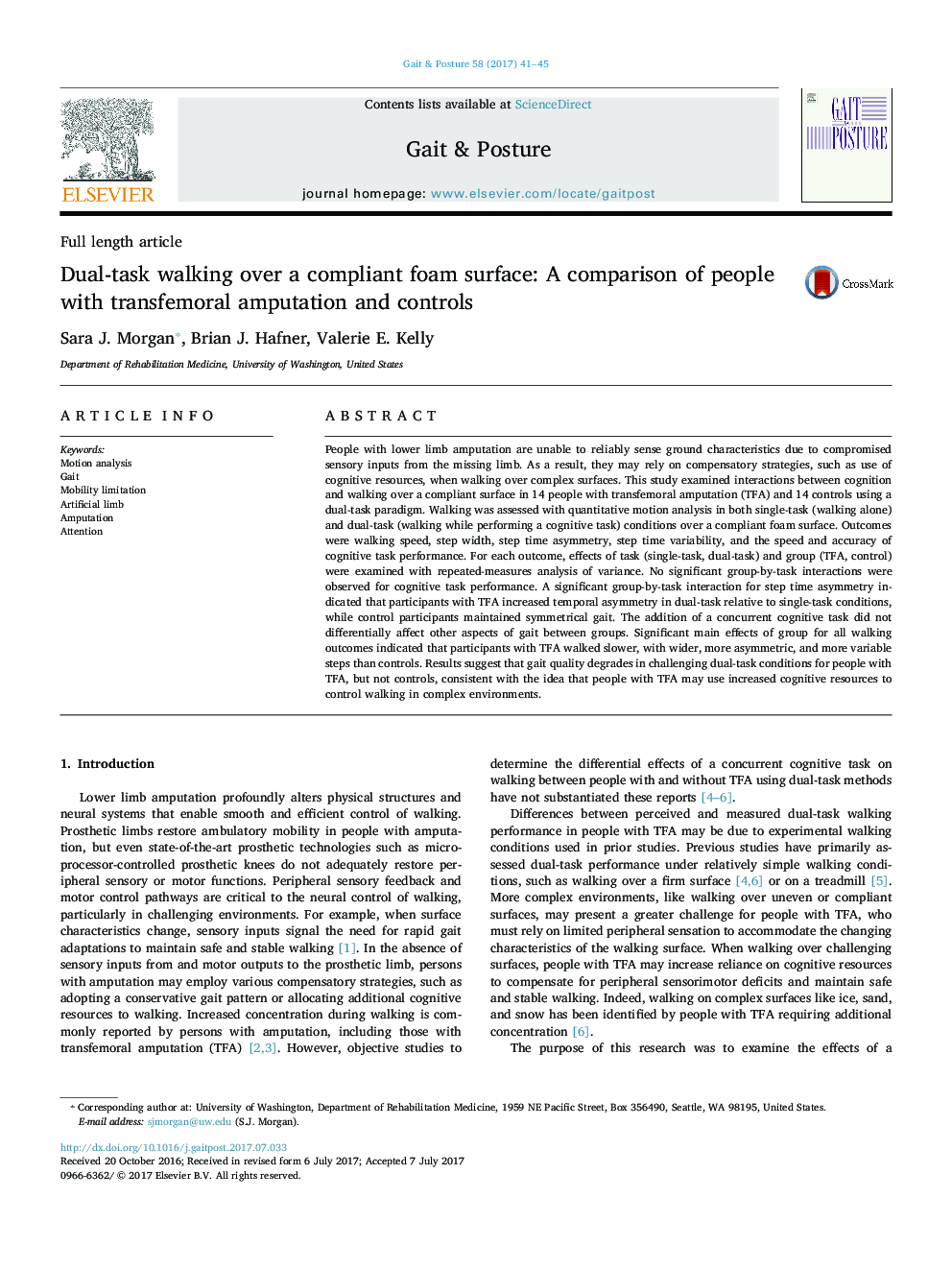| کد مقاله | کد نشریه | سال انتشار | مقاله انگلیسی | نسخه تمام متن |
|---|---|---|---|---|
| 5707595 | 1603837 | 2017 | 5 صفحه PDF | دانلود رایگان |
عنوان انگلیسی مقاله ISI
Dual-task walking over a compliant foam surface: A comparison of people with transfemoral amputation and controls
ترجمه فارسی عنوان
پیاده روی دوطرفه بر روی سطوح فوم مناسب: مقایسۀ افرادی که دارای قطع عضو و کنترل هستند
دانلود مقاله + سفارش ترجمه
دانلود مقاله ISI انگلیسی
رایگان برای ایرانیان
کلمات کلیدی
تجزیه و تحلیل حرکت راه رفتن، محدودیت تحرک، اندام مصنوعی، قطع توجه
موضوعات مرتبط
علوم پزشکی و سلامت
پزشکی و دندانپزشکی
ارتوپدی، پزشکی ورزشی و توانبخشی
چکیده انگلیسی
People with lower limb amputation are unable to reliably sense ground characteristics due to compromised sensory inputs from the missing limb. As a result, they may rely on compensatory strategies, such as use of cognitive resources, when walking over complex surfaces. This study examined interactions between cognition and walking over a compliant surface in 14 people with transfemoral amputation (TFA) and 14 controls using a dual-task paradigm. Walking was assessed with quantitative motion analysis in both single-task (walking alone) and dual-task (walking while performing a cognitive task) conditions over a compliant foam surface. Outcomes were walking speed, step width, step time asymmetry, step time variability, and the speed and accuracy of cognitive task performance. For each outcome, effects of task (single-task, dual-task) and group (TFA, control) were examined with repeated-measures analysis of variance. No significant group-by-task interactions were observed for cognitive task performance. A significant group-by-task interaction for step time asymmetry indicated that participants with TFA increased temporal asymmetry in dual-task relative to single-task conditions, while control participants maintained symmetrical gait. The addition of a concurrent cognitive task did not differentially affect other aspects of gait between groups. Significant main effects of group for all walking outcomes indicated that participants with TFA walked slower, with wider, more asymmetric, and more variable steps than controls. Results suggest that gait quality degrades in challenging dual-task conditions for people with TFA, but not controls, consistent with the idea that people with TFA may use increased cognitive resources to control walking in complex environments.
ناشر
Database: Elsevier - ScienceDirect (ساینس دایرکت)
Journal: Gait & Posture - Volume 58, October 2017, Pages 41-45
Journal: Gait & Posture - Volume 58, October 2017, Pages 41-45
نویسندگان
Sara J. Morgan, Brian J. Hafner, Valerie E. Kelly,
